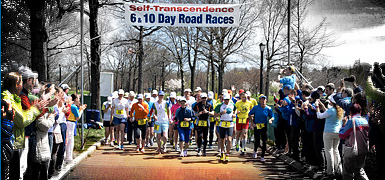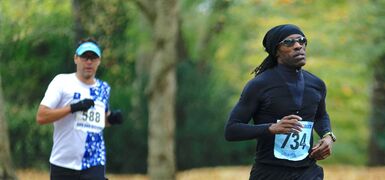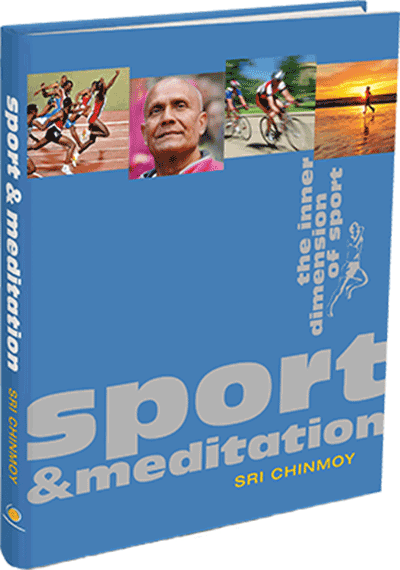Abichal Watkins, 45, from Pontypool, Wales has run more than 30 ultra-marathons, and is the first runner from the UK to complete the world's longest footrace of 3,100 miles. Paula Bartimeus finds out what inspired him to take up ultra-running, and how he trains for these gruelling endurance events.
What motivated you to take up ultra-running and what was the distance of your first ultra-race?
As an enthusiastic marathon runner I used to help with the set-up of annual seven- and ten-day races held on Randall's Island, New York City. This was in the early nineties. Besides observing a very special atmosphere at these events, I saw a tremendous focus and determination in the participants. At the end of one of the races I began to wonder if I might have the capacity to run this kind of mileage. I spoke to the race organiser who advised me to train for a 24-hour race, and then build up from there. So in 1995 I entered my first 24-hour race in Arizona, where I completed 68 miles.
What other distances have you run?
From 1995 to 2003 I gradually developed endurance by running a number of ultras and multi-days, including four 24-hour races, eight 10-day races, three 700-mile races, and a 1,000-mile race. In 2003 I ran 2,747 miles in 53 days, which set me up for my biggest challenge- the longest-ever certified race of 3,100 miles.
Since 2004 you've competed in the Sri Chinmoy Marathon Team 3,100-mile race for three consecutive years. How do you prepare for an event like this, which totals to over 118 marathons in a row?
For a race of this magnitude many years of training is required. Training for a multi-day race is not like preparing for a marathon where you can run the distance in a training run. So to some extent running a multi-day is your training for the next one. Besides increasing stamina through these long races, other training includes running about 50 to 60 miles a week (6 or 7 miles a day and a long 18–20-miler on Sundays), and weight training to build up core muscle groups.
What's your best time for this race? It was in 2004- 55 days and 8 hours- an average of just over 56 miles a day. The record is 41 days 8 hours and 16 minutes, set last year by Madhupran Schwerk from Germany. The official time-limit for the 3,100-mile race is 51 days, which I haven't accomplished yet, but hope to in the future. However, runners are usually given several days grace to finish.
During the race what does a typical day comprise?
A typical day for me is made up of about 18 hours of running, with two short 15-minute breaks. A long break between midnight and 6 am the next day is mandatory.
An example day
05.25 ..... Get up 05.40 ..... Cycle to the race 06.00- 12.00 .Running 12.00- 12.15 ... Break (15 minutes) 12.15- 19.00 .Running 19.00- 19.15 .Break (15 minutes) 19.15- 24.00 .Running 24.00 ..... Finish for the day and cycle home to get some sleep.
3. How do you sustain yourself nutritionally doing all that running?
You need to eat almost constantly to maintain energy levels and nutrient status. Main meals are provided three times a day, and it might take me up to two hours to get through each one- eating little and often while continuing to run. Between meals there are plenty of snacks at the food stations: sandwiches, fruit, cake- you name it, it's there. The trick is to eat small quantities frequently. This way, your stomach doesn't get too full at any one time, so you don't waste vital energy digesting. At the end of each day I eat as much as I can pile in, to refuel for next day's running.
Fluid-wise it's essential to drink at least 100 ml of water every lap (each lap is just over half a mile), although during peak heat hours I drink about 300 ml per lap. New York summers- when the race is held- can be hot and humid. Energy drinks are available and I find cola helps give me a boost.
I normally take electrolytes in tablet form, along with a multivitamin and mineral and a number of individual nutrients including calcium, magnesium, potassium, vitamins C and E, and omega-3 and 6 fats.
The course is set round a 0.5,488-mile (833 metre) loop. Doesn't it get boring running round the same course for days?
There's no time to get bored. You have to continually monitor the body and be aware of its needs. If a problem arises such as blisters, chafing, foot pain, knee pain, etc, it must be addressed immediately, otherwise it can put you out of the race for several days. Usually, I can figure out how to deal with most problems, but sometimes the advice from other participants can be of immense use. There is a great sense of camaraderie during a multi-day, as races like these are about competing with yourself- not with others.
Also, you need to be conscious of what's going on in the mind. There can be long periods when you feel wonderful- euphoric even. Then there are times when you feel low and thoughts can become negative. If I notice I'm getting into a mental rut I try changing my routine, for example, I might listen to some music, chat to other runners, try to meditate .
Although the course may appear monotonous, it circles a high school and a park, so in many ways the scenery is always changing. People are out and about, kids are going to and from school, and friends and locals come down to cheer you on. All these things provide entertainment.
So as you can see, for me, boredom is not an issue.
How long does it normally take you to recover physically after such an event?
After my first 3,100-race it took me about four months to recover. After my second attempt it took about three months. In 2006 it took about the same time, although I finished the race in August and ran a 24-hour race in October in London.
Has going beyond your perceived running limits altered your outlook on life?
Definitely! Once you've pushed yourself beyond what you thought possible, it's not theoretical anymore. I can now apply this to anything in my life- not just running. Most of us don't realise how much capacity we have within until we try to utilise it. It's about going beyond fears and mental barriers and committing to your goals.
What advice would you give to a novice in ultra-running?
Start off as I did, by first training for marathons; then extend the distance by entering 50-km, 50-mile, and 100-mile races. This provides the runner with a taste of what's involved. The 24-hour race comes next and is the gateway into multi-day racing. But it takes years for the body adapt and cope with the physical stress, so to avoid injury it's crucial to train carefully and increase the mileage over time.
What are your goals for 2007?
To run the 3,100-mile race within the official time-span of 51 days- that's an average of just under 61 miles per day.
Further information
The complete resource for the multi-day runner: Multiday Running
Sri Chinmoy Marathon Team (the world's largest sponsor of ultra-races) Sri Chinmoy Races




